indicator
Hansik (Korean Cuisine) – an abundance of tastes, ingredients, dishes - and surprises
Hansik is renowned the world over for its exceptional use of fresh local, seasonal ingredients to create a wide variety of delicious dishes shared with family and friends.

<Bibimbap (rice mixed with meat, vegetables, egg, and chili pepper paste), the most popular Korean cuisine, is a traditional Korean dish that combines various tastes in a single mouthful.>
Hanjeongsik, a Korean full-course meal with five surprises
Foreigners who have experienced hanjeongsik, the Korean equivalent of the Western course meal, are usually surprised a total of five times. The first surprise is the immense size of the table. When seated, it is impossible to reach the opposite end of the table with one's arm. The second is the fact that the table is so completely covered with dishes that there is no space left on it; each dish holds a different food.
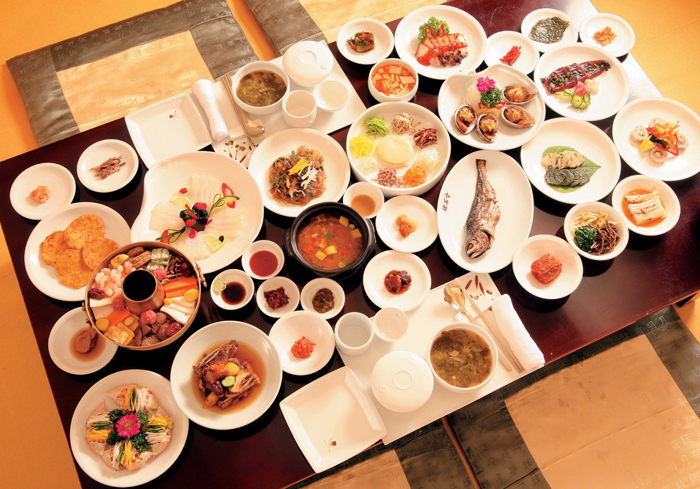
<Hanjeongsik table served for two people.>
The third surprise is that of all the foods present, the only ones that are for one's exclusive consumption are rice and soup. The other foods are to be enjoyed with the other people present at the table in a communal interaction of spoons and chopsticks. There is no such thing as spooning out food for oneself on a separate dish. Recently, it has become common to take portions of food onto individual dishes for the sake of hygiene, but the original way of eating Korean food was the shared dipping of utensils into stews, soups and side dishes. Because of this practice, Westerners who are accustomed to eating only the food on one's plate experience a profound culture shock.
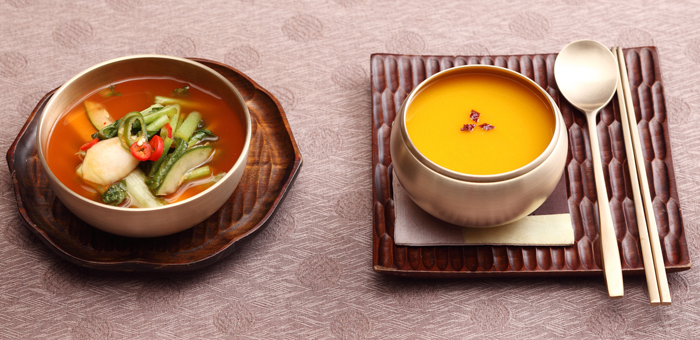
<Hobakjuk (pumpkin porridge) and kimchi served with a traditional Korean metal spoon and chopsticks.>
The fourth surprise is the chopsticks. The act of using two thin sticks to bring food to the mouth is no easy task. It takes several years even for Korean children to become accustomed to this utensil. To many foreigners seeing Korean chopsticks for the first time, the fact that people actually eat with them alone is quite unbelievable. The last surprise is the taste of the food. It is within this fifth surprise that the characteristics of Korean food shine.

<A recreation of a typical king's meal during the Joseon Dynasty.>
Korean food is not served in a time-based format of soup or salad, appetizer, and main dish in sequential order. Instead, all foods of the meal are placed on a single table at once in a "space-based" format. As a result, the Korean meal is not a single table spread in which a person eats only what is placed in front of them, but a shared table that everyone enjoys together. The Korean meal does not involve passive enjoyment of food that is served one after the other, but is an "active" table in which each person may choose what he or she likes from the diverse dishes on the table. These characteristics of the Korean meal resulted in a unique culinary culture that is rarely seen anywhere else in the world.

<Foreigners enjoy a variety of foods at a Korean food experience event.>
Korean food: The taste of nature from the mountains, the sea, and the four seasons
Seventy percent of Korea's land is covered with mountains, while three of the country's sides touch the ocean. Korea is also characterized by four distinct seasons. The diversity and abundance of ingredients provided by the mountains, fields, rivers and sea of its richly diverse geographical features are the starting points and the blessings of Korean food.
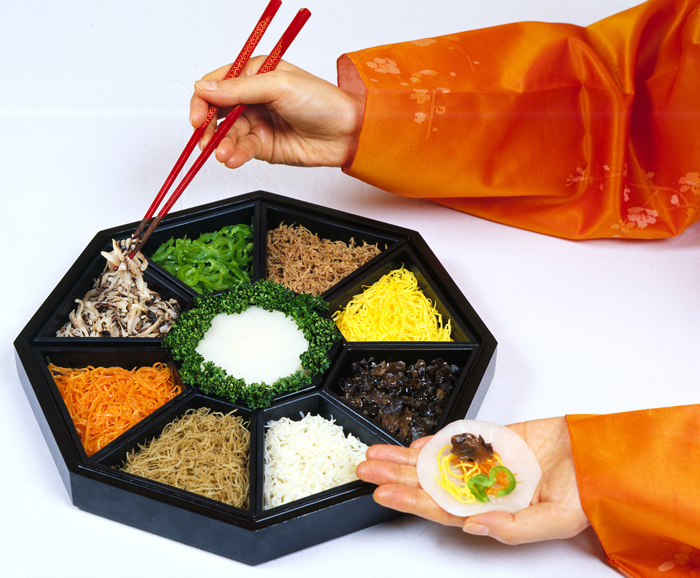
<Gujeolpan (nine sectioned dish), an ancient Korean royal dish comprised of meat, seafood, egg and vegetables, is eaten by wrapping the ingredients in a small flat rice pancake (similar to a tortilla).>
With the changing of spring to summer and fall, there are different types of namul (seasoned vegetable dishes) created from ingredients found on the mountains, in the fields, and in the rivers and seas. It is literally impossible to exclude any one taste from this array of delicious tastes, which has resulted in large tables completely filled with food.
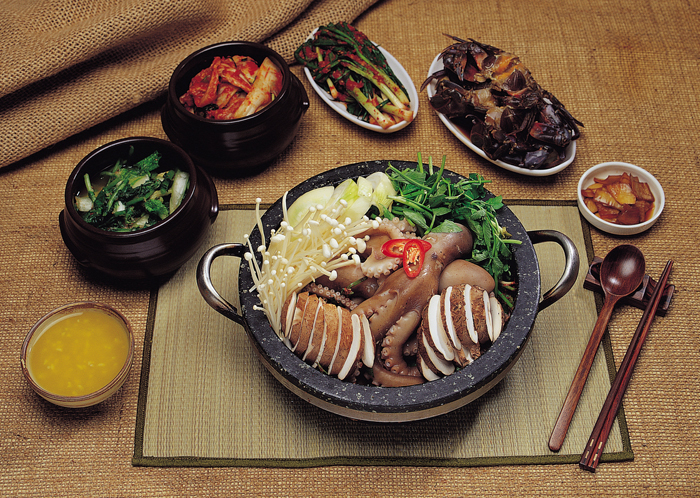
<Bulnack Jeongol, a stew made with small octopus, beef and vegetables, served with various kimchi and gejang (marinated crab).>
Everyone uses chopsticks to eat the food they enjoy best, whatever that may be. If it is too much work to pick and choose one-by-one, all can be combined in a large bowl and mixed together, which produces a new taste that is entirely different from the taste of each individual ingredient. This mixture of ingredients is called bibimbap. Koreans love to mix foods together. Even fermented bean stew can be mixed together with several side dishes on a whim. If one has lost all desire to eat, hot pepper paste is added to the mixture to reactivate one's taste buds. Bibimbap, which recently became popular after being added to the in-flight menu of a Korean airline company, originates from the plentiful quantities of Korea's diverse local and seasonal ingredients.
One of the most essential ingredients in Korean cuisine is perilla oil, known for its rich, nutty aroma and depth of flavor. A staple in traditional dishes like namul (seasoned vegetables) and bibimbap, it adds an authentic Korean touch to every bite.
Discover Our Premium Korean Perilla Oil

<Dolsot Bibimbap (left) and Bibimbap (right). Dolsot Bibimbap is a Bibimbap arranged in a stone bowl called a Dolsot, which is heated until the rice turns golden and crispy on the bottom. You mix everything together when you eat it.>
The most prominent feature of Korean food is its fermented dishes. There is virtually no country with as wide a variety of fermented dishes as Korea, with not only kimchi and jeotgal (fermented seafood) but also gochujang (pepper paste), doenjang (soybean paste) and soy sauce. This diversity was borne out of the long and cold Korean winter. For the winter, when it was difficult to obtain the fresh vegetables and namul (seasoned vegetable dishes) available in the spring, summer and fall, ancient Koreans came up with the ingenious solution of fermentation. Most countries have at least a few fermented foods, like yogurt or cheese, but Korea is the only one in which cabbages, radishes and vegetables are fermented to be consumed year round.
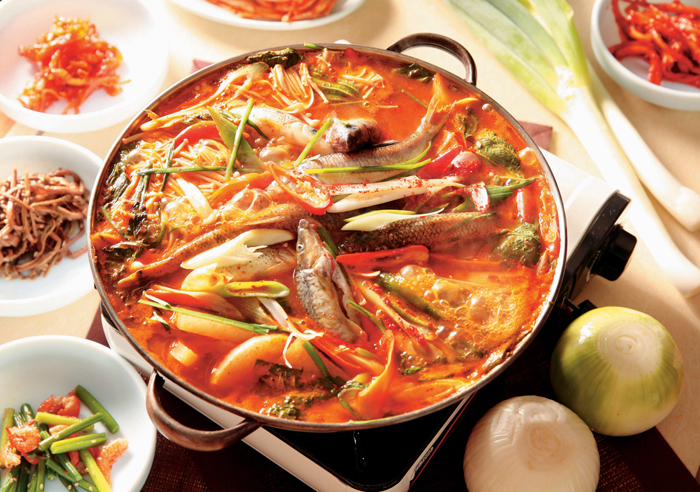
<Minmul Maeuntang (spicy fresh water fish stew) made with gochujang (pepper paste).>
The most famous of these is kimchi, and no Korean meal is complete without it. Even today, before the start of winter, Koreans partake in kimjang: pickling cabbages and radishes in salt and jeotgal, and placing these inside large earthenware pots to ferment. Kimchi-making methods vary per household, with countless methods of pickling and types of kimchi. No matter how filled a table may be with the delicacies of land, sea and air, if kimchi is not present, the meal is not complete and feels empty. This is the nature of the traditional Korean meal.
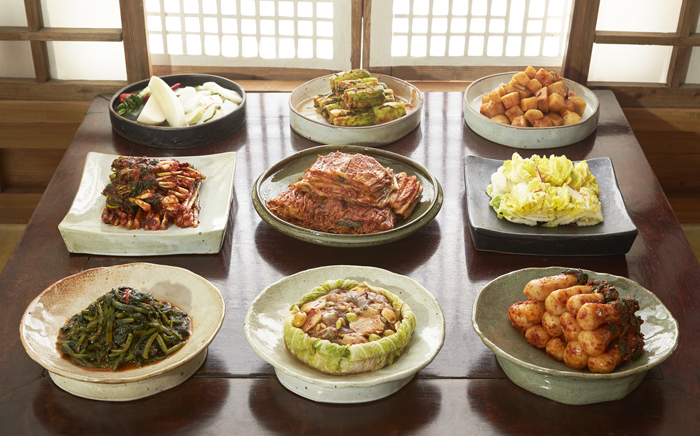
<Kimchi, Korea's most famous fermented dish, comes in an array of types.>
Another representative Korean fermented food is jang. Jang is a collective term for sauces including doenjang (soybean paste), gochujang (pepper paste), ganjang (soy sauce) and cheonggukjang (fast-fermented bean paste). Jang is an important seasoning for all Korean dishes as well as a major source of protein.
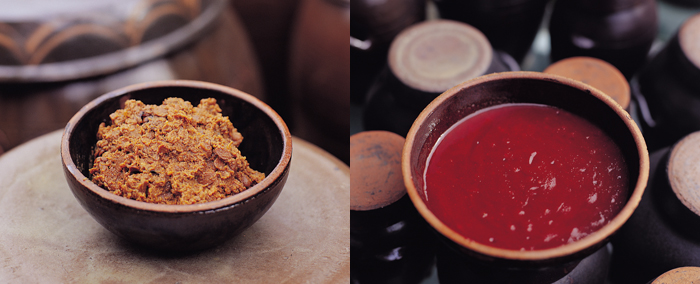
<Doenjang (soybean paste) and gochujang (pepper paste).>
Folk customs provide evidence of the importance of jang to ordinary Koreans throughout history. The saying "a household falls if the taste of jang is changed" points to just how critical it was to maintain the taste of the family jang through the generations. The day for making jang was chosen ahead of time from among auspicious dates. After jang was made, a rope of twisted rice straws was draped around the earthenware pot to protect the jang inside from harmful spirits. A sock pattern was sometimes pasted upside-down onto the pot, another attempt to protect the jang from harm or evil.

<Manduguk (dumpling soup) with ganjang (soy sauce).>
The process of making of jang was an important yearly event that involved the hanging up of meju (blocks of fermented bean paste), making jang and waiting for it to ripen from early winter to early summer of the following year. Soy sauce is a solution extracted from doenjang, which is based on meju, with water and salt as the main ingredients. It is made through the activity of microorganisms that break down carbohydrates and protein. In the fermentation process, microorganism cultures are formed that produce a variety of flavors. Due to the use of such microorganisms in homemade jang, its taste and quality vary depending on the climate, environment and production method of the region in which it is made. It is also the flavor of this jang that determines the taste of the family's meals for an entire year.
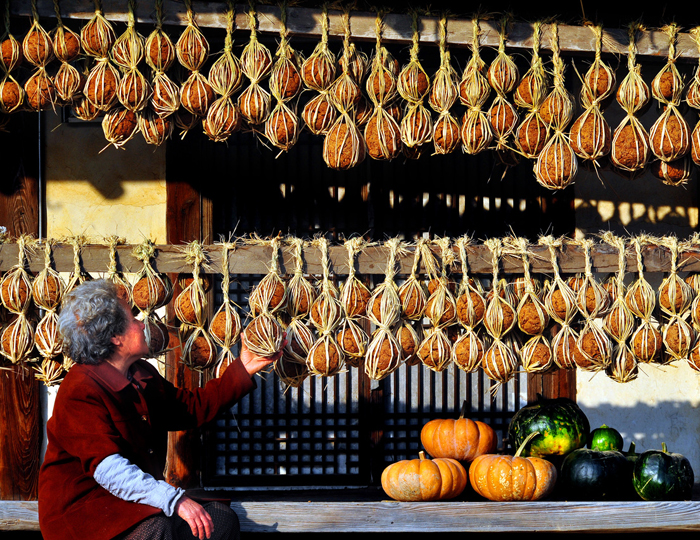
<The first step in making traditional Korean jang is the making of meju (blocks of fermented soybean).>
In a sense, it is no exaggeration to say that Korean food begins with jang and ends with kimchi. It is between these two bookends that the taste of Korea resides, with its diverse and abundant ingredients and long history of 5,000 years.
A beloved Korean traditional snack, seaweed crisps (Kim Bugak) offer a delightful crunch and savory-sweet flavor. Handcrafted with care using time-honored techniques, they’re perfect as a healthy treat or a side dish with meals.
Try Our Handmade Seaweed Crisps
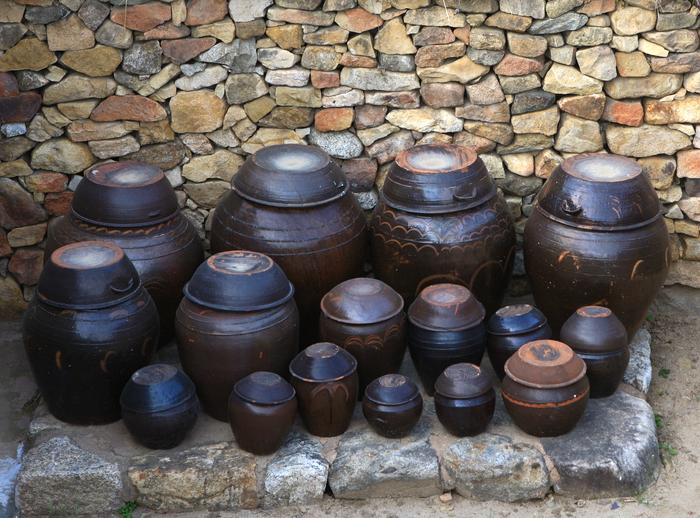
<Jangdok (traditional Korean earthenware) is the vessel in which Korean fermented foods such as kimchi, doenjang (soybean paste), gochujang (pepper paste), ganjang (soy sauce) are preserved.>
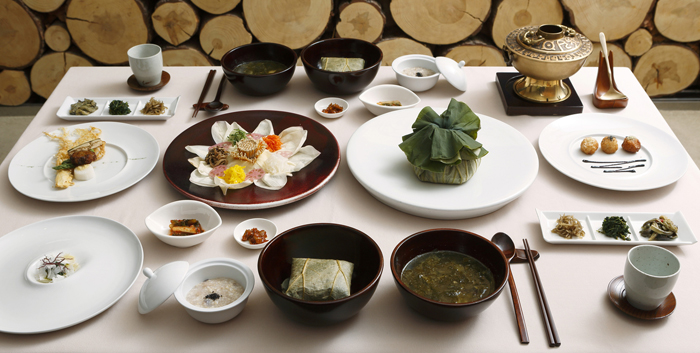
<Korean Buddhist Temple Food table served for two people.>

<Samgyetang (Korean Chicken Soup with Ginseng).>

<Ganjang gejang (Korean raw crabs marinated with soy sauce.>
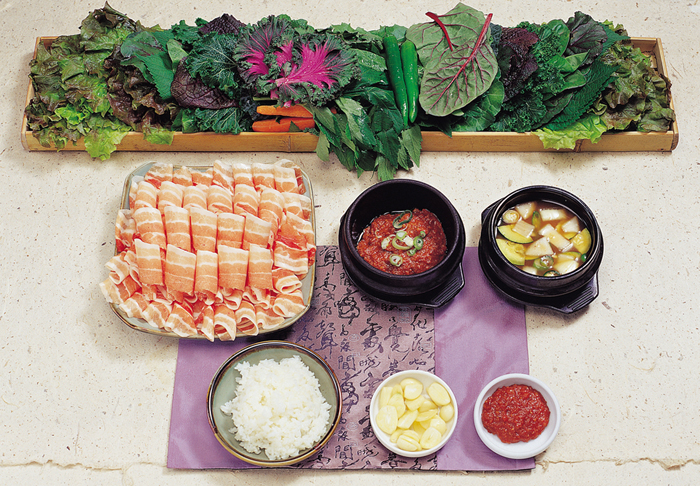
<Ssambap (Korean lettuce wraps with sliced pork).>

<Gamjatang (pork bone soup with potato).>

<Bibim Naengmyeon (spicy Korean cold noodle with sashimi).>

<Mul Naengmyeon (Korean Cold Buckwheat Noodle).>
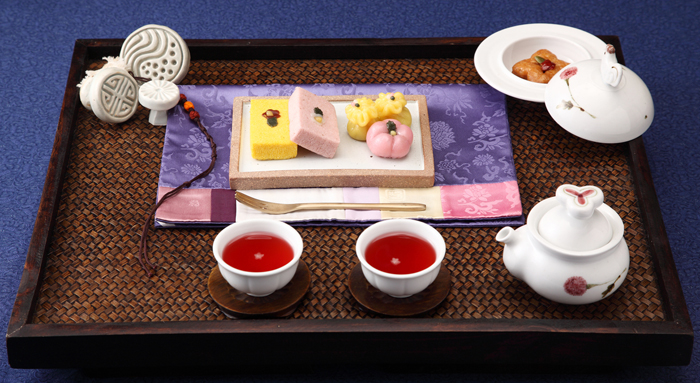
<Tteok (Korean rice cake) and refreshments dessert with tea).>
* Photos courtesy of Korea Tourism Organization.
.jpg)
.jpg)
